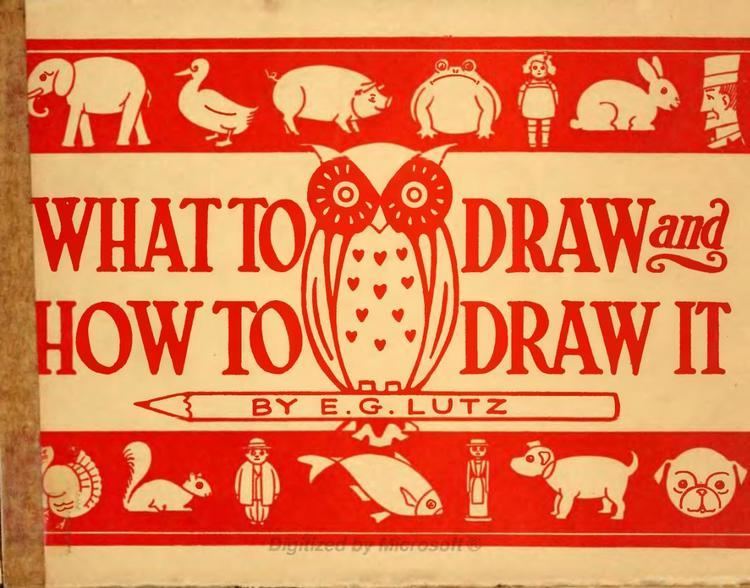 | ||
Books What to Draw and How to Dr, Drawing Made Easy with Sele, What to Draw and How to Dr, Practical Art Anatomy, Animated Cartoons | ||
Edwin George Lutz (1868–?) was an American illustrator, cartoonist, and the author of numerous books.
Career
Little is known of Edwin George Lutz's early life. After study at the Pennsylvania Museum and School of Industrial Art, from which he graduated in 1892, Lutz began a career as a cartoonist and illustrator. He met with early success and his work appeared in many publications, including the New York Herald and Philadelphia Press.
Later, Lutz established a career as the author of numerous books. Most of the books were how-to manuals dealing with art and drawing techniques, but at least two were about various aspects of the film industry, which was rapidly developing in the early years of the 20th century.
Lutz published many books from the 1910s through the 1930s, often under the name E.G. Lutz. Among his many books were What to draw and how to draw it: "the ideal method" (1913), Practical drawing; a book for the student and the general reader (1915), Practical art anatomy (1918), Animated cartoons; how they are made, their origin and development,(1920), Instead of scribbling; a guide to pencil drawing (1924), Practical pictorial composition; a guide to the appreciation of pictures (1926), Motion-picture cameraman (1927), Animal drawing in outline; a drawing book for young people (1931), and Practical course in memory drawing (1936).
Perhaps the most influential of Lutz's books was Animated Cartoons; How They Are Made, Their Origin and Development, which was published in 1920 by the firm Charles Scribner's Sons. The book detailed what were then state-of-the-art animation techniques. The book was widely circulated and the subject of a substantial review in New York Times. Among the many admirers of Lutz's book was Walt Disney, who consulted it very early in his career as an animator and is said to have credited it as an important source as he learned the art and craft of animation in the early 1920s.
